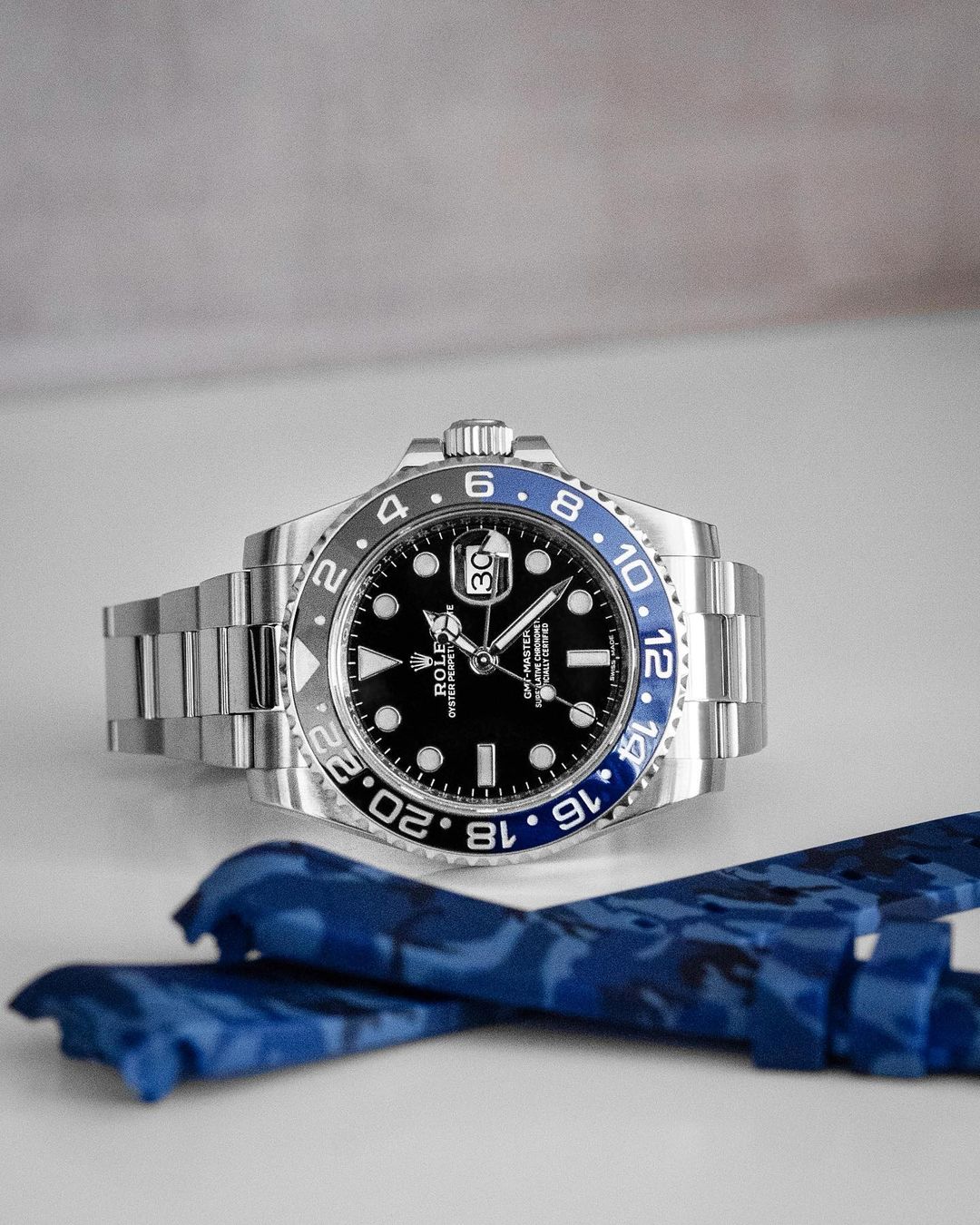July 17
Rolex Jubilee vs Rolex Oyster - Which Rolex Bracelet Is Best for You?

It goes without saying that one of the most essential parts of any watch is the mechanism through which it is attached to your wrist. You certainly don’t need to tell us here at Horus Straps that twice. While we love our famed rubber and leather watch straps, some of the bracelet designs that we know and love in watchmaking deserve some airtime too.
And so, we have decided to explore two of watchmaking’s best-known watch straps, or watch bracelets rather, Rolex’s Oyster bracelet and their Jubilee bracelet, and examine which is best for you, their history and why you might pick one over the other.
Patented in 1947 and first appearing in 1948, the Rolex Oyster bracelet, with its three-link design, is perhaps one of the most iconic bracelets in all of watchmaking. While the Oyster bracelet wasn’t Rolex’s first in-house bracelet - that honor goes to the Jubilee, released in 1945 specifically for the Datejust, it is the clearest indication of the company’s perfectionist attitude through its constant and traceable evolution, which has also informed the design of watch bracelets for an uncountable amount of other watchmakers.
In keeping with Rolex’s determination to constantly improve their offerings, the Oyster bracelet, much like the Jubilee, has undergone several changes since its inception, all in an attempt to maintain its status as the benchmark to which all other bracelets can be compared to.
The Oyster bracelet can trace its origin to Rolex’s partnership with the bracelet manufacturer Guy Fréres which began in the 1930s. However, in a bid to create uniformity, Rolex wanted a sportier bracelet that would match its range of Bubble Backs and chronographs and, as such, collaborated with the esteemed bracelet manufacturer on creating the Oyster bracelet.
Of the numerous changes that the Oyster bracelet has undergone, the most aesthetically significant was the introduction of the end link in 1952, an aspect of the Jubilee bracelet that was present from the very beginning. Prior to this change, the bracelet would only span straight across from lug to lug and leave a gap between the bracelet and case.
The first watch to be factory-fitted with these end links was the GMT-Master, released in 1954. The next innovation to occur to the Oyster bracelet was the change from hollow riveted links to the more durable folded steel links in 1967. As these links increased the mass of the bracelet, they were naturally able to take more of a beating. These folded steel links were then replaced in 1975 by the solid steel links with a hollow center link. As this innovation further increased the mass of the Oyster bracelet even further, the durability was increased too.
Launched in 1945 along with the Rolex Datejust to celebrate Rolex’s 40th anniversary, the Jubilee, with its more intricate five-link construction, is famed as the classier and dressier older sibling to the Oyster. First only offered in 18kt yellow gold, it featured solid peripheral links with three hollow center links that would act to hold the bracelet together as the pins would interlock through one link and into the next.
From then on, the Jubilee bracelet began to expand into stainless steel offerings in the 1950s, with it first using folded peripheral links on the bracelet ref. 6251H, which was popularized on the Rolex GMT-Master. While today famed as a sports watch, the GMT-Master was designed for use by commercial pilots, and thus the Jubilee bracelet was offered.
With innovations such as the introduction of solid center links, peripheral links and endlinks, ceramic pins to prevent stretch, new clasp designs, and more, the Jubilee bracelet is just as functional as its sportier sibling, the Oyster bracelet.
With models like the GMT-Master providing the perfect foundation through which the Jubilee can display its robust and capable modern design, one’s choice of bracelet is merely a personal choice.
The Datejust and Sky-Dweller also provide collectors with the choice of either bracelet, both fitted with the Oysterclasp, unlike the GMT-Master II, which gets the Oysterlock clasp, with means collectors can either opt for the sportier aesthetic of the Oyster bracelet or dressier design of the Jubilee.
Both tremendously iconic designs, the Oyster and Jubilee bracelet, have become landmark pieces of design for Rolex over the decades. However, a change is something we can still all appreciate from time to time. If you would like to change your Oyster or Jubilee bracelet or any other OEM Rolex bracelet, please check out our selection of Horus Straps for Rolex.
July 17
All postsFeatured Posts

December 14
What to Buy as a Christmas Gift This Year (For Watch Collectors)

November 13
Cartier Santos 100 XL: The Path to New Heights

March 27